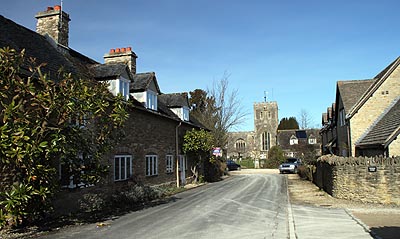 |
 |
|||
|
|
 Buckland BucklandTax-Free Manor A beautiful Roman bracelet, bronze
with coiled ends, was discovered in the Thames, just north of the hamlet
of Buckland Marsh. Strange to tell, this seemingly insignificant event
has given rise to an elaborate Victorian folktale about a supposed Roman
villa and its owner who gave the bracelet to his wife on their sixteenth
wedding anniversary. While walking by the river one day, she was
startled by a pheasant emerging from a nearby thicket and - plop - her
present was dropped in the Thames! The meaning of the name is very simple, being “Book Land”, though perhaps some further explanation is needed. In Saxon times, most land was folkland held through folk or common law. However, some lucky people had their land granted by Royal charter or book. Bookland was exempt from all the usual taxes and could be disposed of as the owner saw fit. Just south of the hamlet of Carswell Marsh stand Barcote Park and Carswell House, both the sites of lost Domesday villages (1086). Barcote appears to have been the westernmost strip of land in Buckland parish with Carswell adjoining. They were both deserted in the Middle Ages. The Yates owned the manor - Buckland Park - from Tudor times. Sir Edward supported the King during the Civil War and was later forced to flee abroad. A stone table under the mulberry tree in the old vicarage garden records: Charles 1st, King of Britain, spent
the night at the house nearby Later John Throckmorton of Coughton Court (Warks) inherited the Manor through his wife. He was the man who laid down the bet that led to the making of the Newbury Coat: from sheep’s back to finished garment in thirteen hours and twenty minutes (See Greenham). It used to be kept at Buckland Park, but has since been moved to Coughton (where it is on display to the public). A replica is kept at the Newbury Museum. See also Gainfield. |
|||
| © Nash Ford Publishing 2001. All Rights Reserved. This location is now administered by Oxfordshire County Council. | ||||


